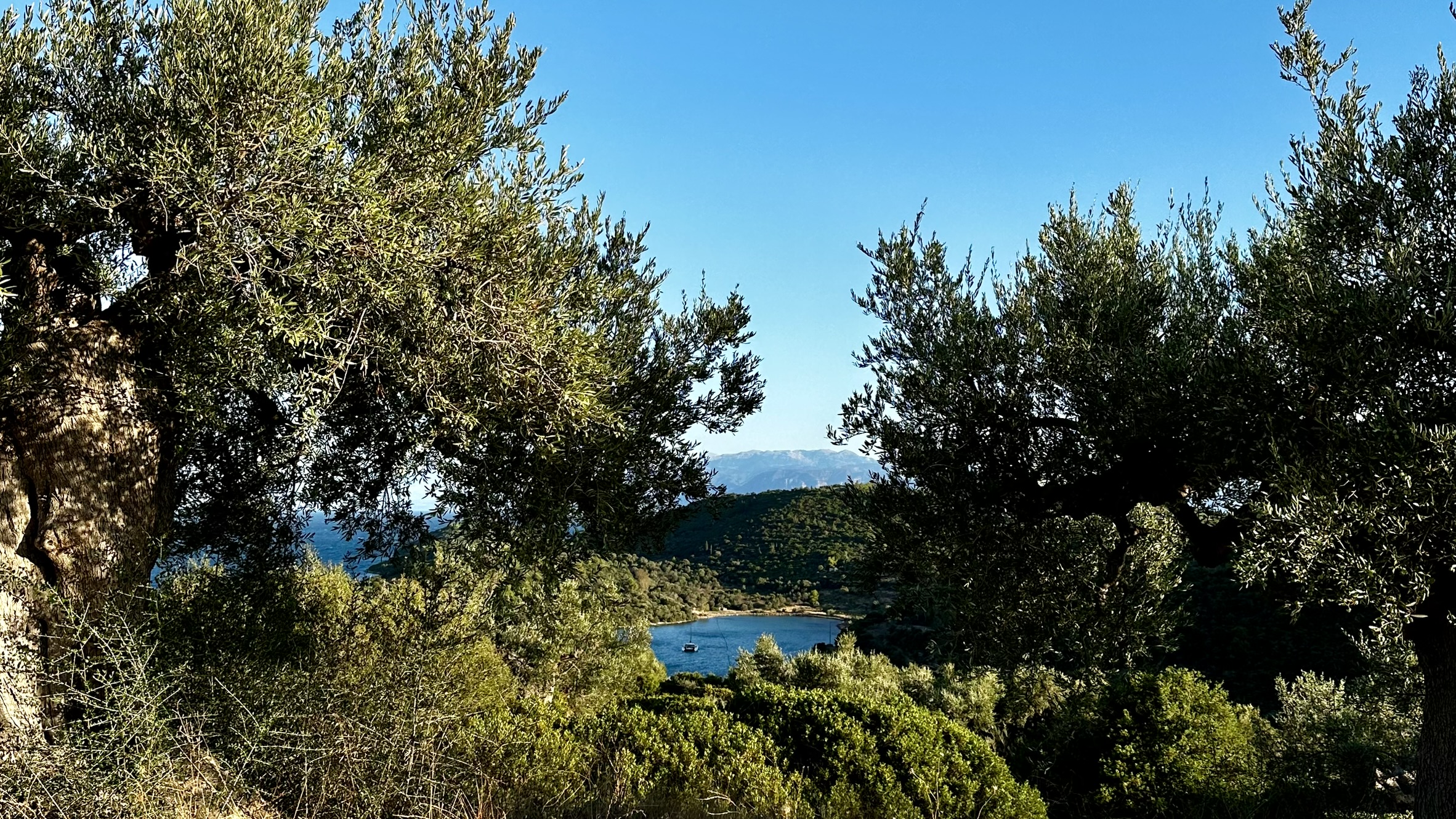
Kefalonia > Trizonia
A Torn Mainsail, 42 Knots of Wind, and 1-2m Waves
We spent a week in Kefalonia, waiting for the storm called Daniel to pass. Only when most boats had left the bay and the weather forecast predicted only 15 knots of wind did we leave the safe harbor of Argostolí and set off on our journey. We originally planned to sail directly to Corinth, but everything turned out differently than expected. What followed were the worst 36 hours of our sailing lives by far.
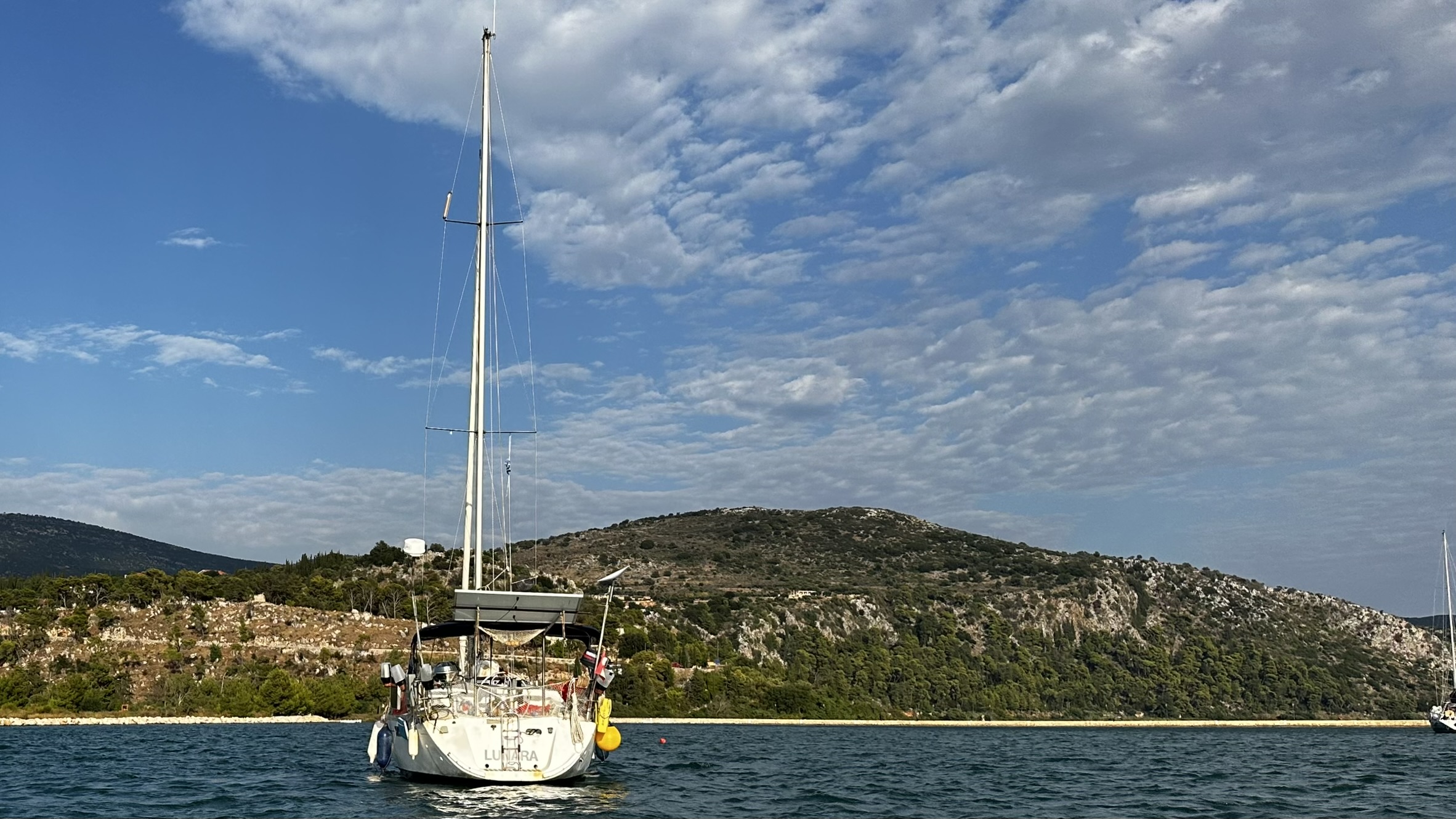
|
09th-10th September 2023: Kefalonia > Trizonia At 7 o'clock in the morning, we raised our anchor. Despite our efforts to repair the autopilot over the past week, it remained unsuccessful. Therefore, we prepared ourselves to steer the whole passage manually. |

Less than an hour after setting off, we had to reef the mainsail as the wind fluctuated between 15 and 25 knots. The waves were also much higher than expected. Nevertheless, we decided to sail on. An hour later, the wind died, and we motored for two hours. From 2 pm, the wind picked up again, and the waves remained more than 1 meter high. Unfortunately, the wind direction was slightly different from the forecast, so despite the strong wind, we had to tack a lot and sometimes use the engine for support. This was very frustrating as we achieved almost no speed despite the strong wind, and we quickly realized that we would probably be underway for a very long time in these challenging conditions. There was no sheltered port or anchorage anywhere in sight.
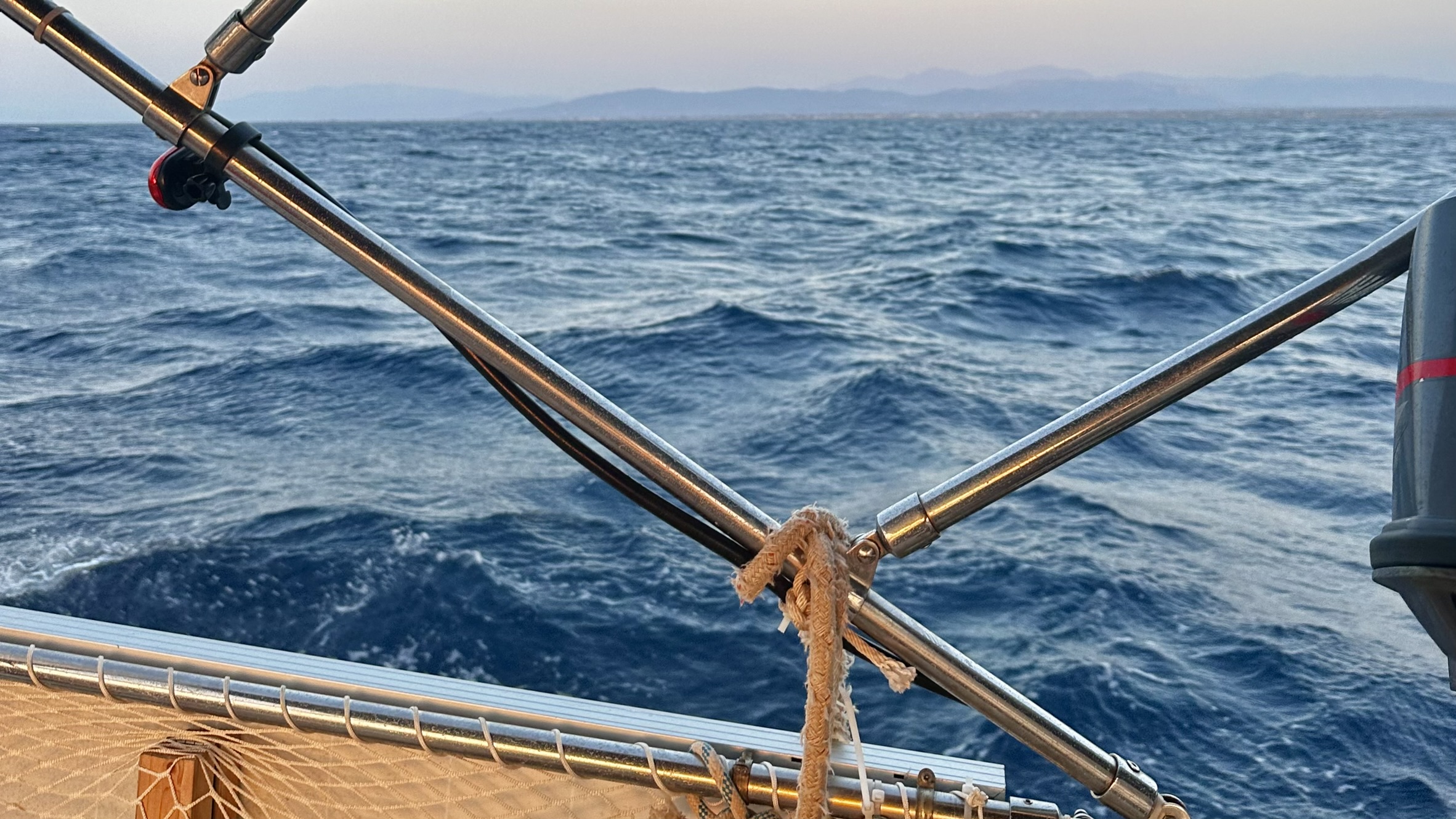
With extremely reefed sails, we continued to sail without an autopilot in winds between 20 and 35 knots, fighting against the strong current and wind. The night felt endless and was exhausting and tiring due to the conditions and the overall situation. We would have preferred to stop somewhere, but there was still no safe port or bay to be found anywhere. So we had to keep going despite gusts of up to 42 knots.
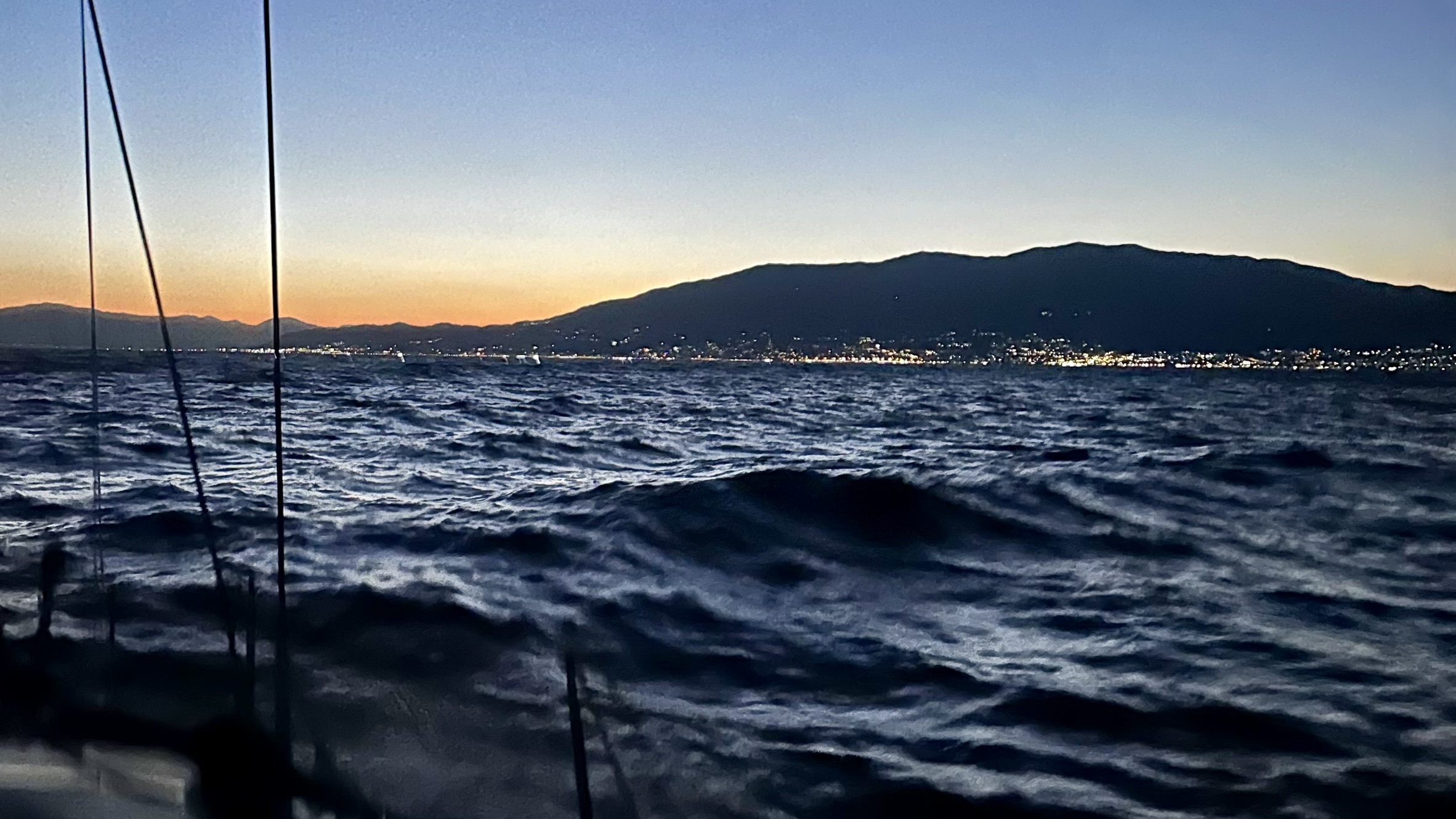
We hid Captain B under a waterproof jacket the whole time and tried to protect her as much as possible. As with all crossings, she was on a lead with us in the cockpit the whole time, as this is the first place we can keep an eye on her and the calmest place to be.
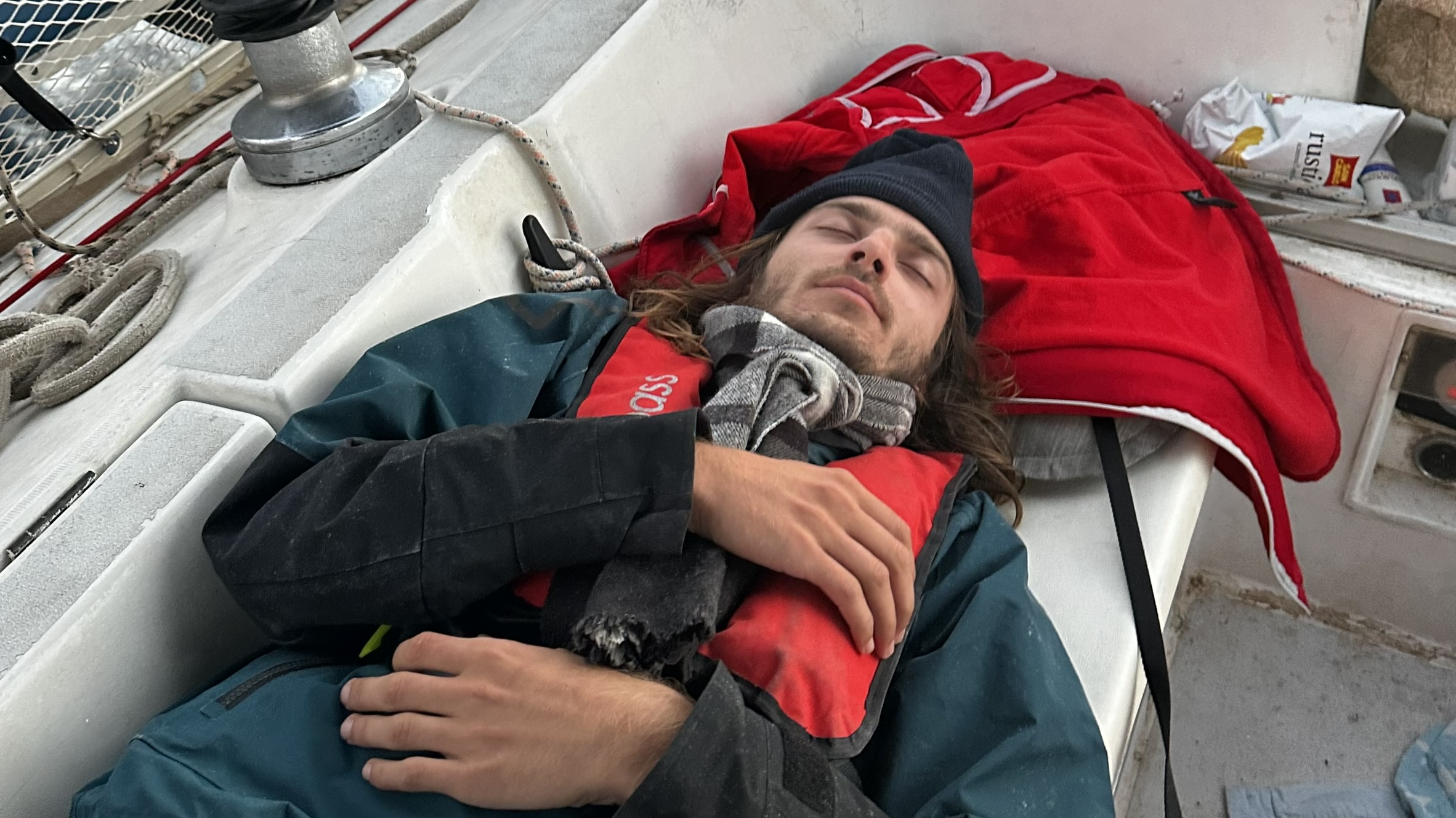
|
|

We were near Patras when the wind suddenly dropped to 5 knots. But within seconds we were hit by a gust of 42 knots and all we heard was a loud bang. It took us a moment to realise that our mainsail had torn several times in the middle. I immediately lunged forwards while Lukas stayed behind the wheel and tried in vain to pull down the mainsail, which was torn to shreds and pieces everywhere. After a short time, I gave up and we swapped places. I don't know how and with what immense strength he managed it, but after more than half an hour, Lukas finally managed to get the sail down and secure it, which of course got caught everywhere along with all the ropes.
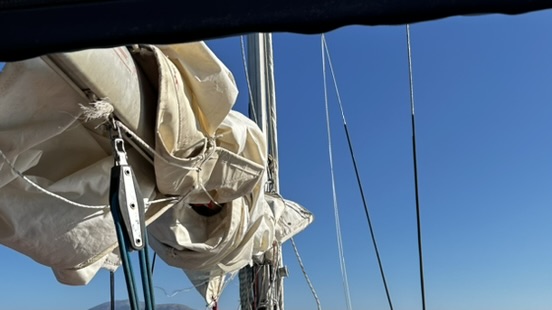
After this experience, all we wanted to do was reach a safe port and leave the boat. But even the thought of mooring somewhere safe was absolutely unrealistic in these conditions. So we did the only thing we could and fought our way through the Gulf of Patras in extreme counter-currents.
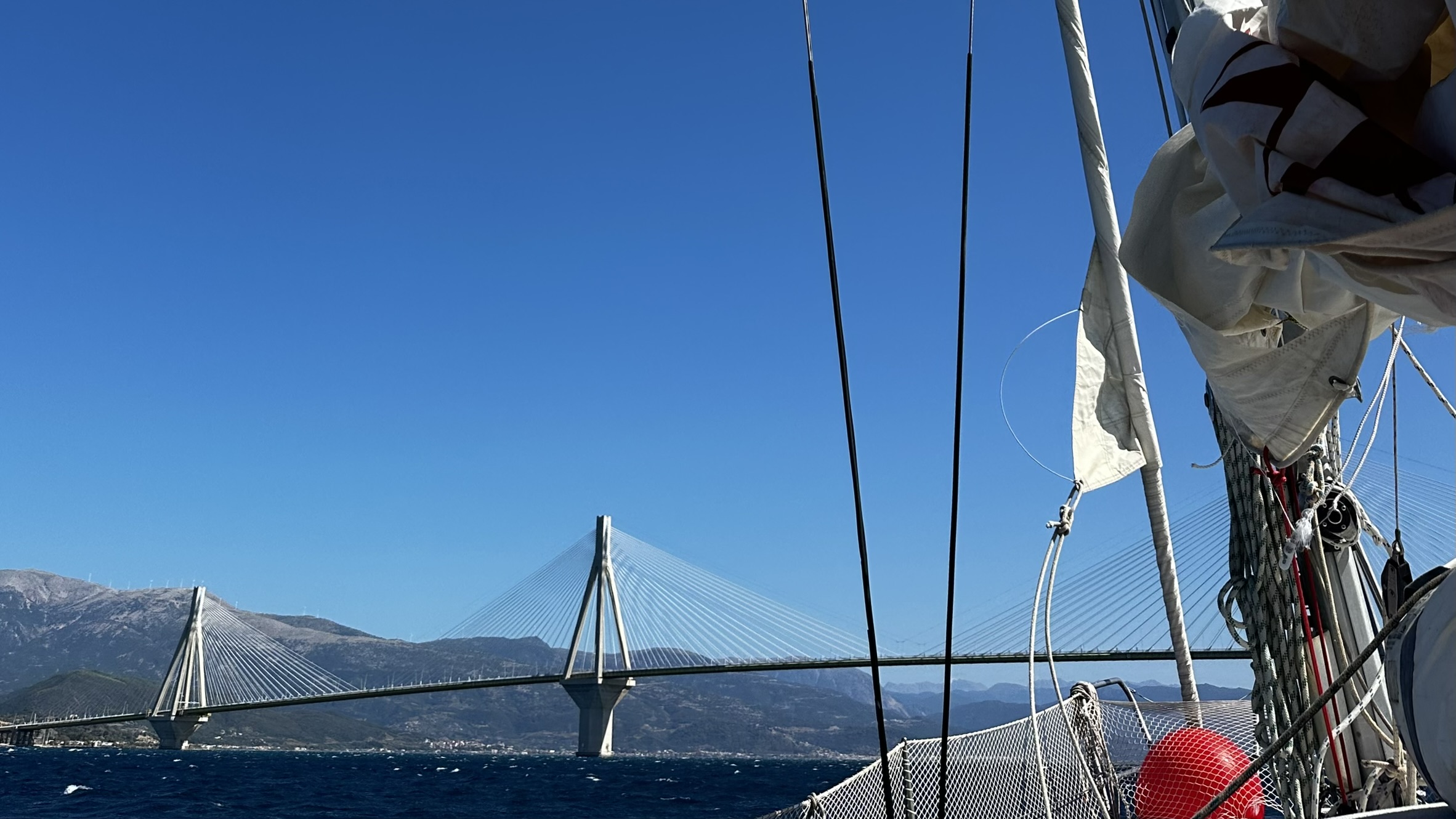
Even reaching the bridge of Patras took us hours. Unfortunately the conditions in the Gulf were no better. According to the charts, the current should have been with us, but we waited in vain for it. Despite my attempts to navigate the waves well, one wave after another flooded into the cockpit. Lukas and especially Baghira, who were just trying to rest, were showered with water seemingly every second. Baghira had a waterproof cover, but it was still uncomfortable for her.
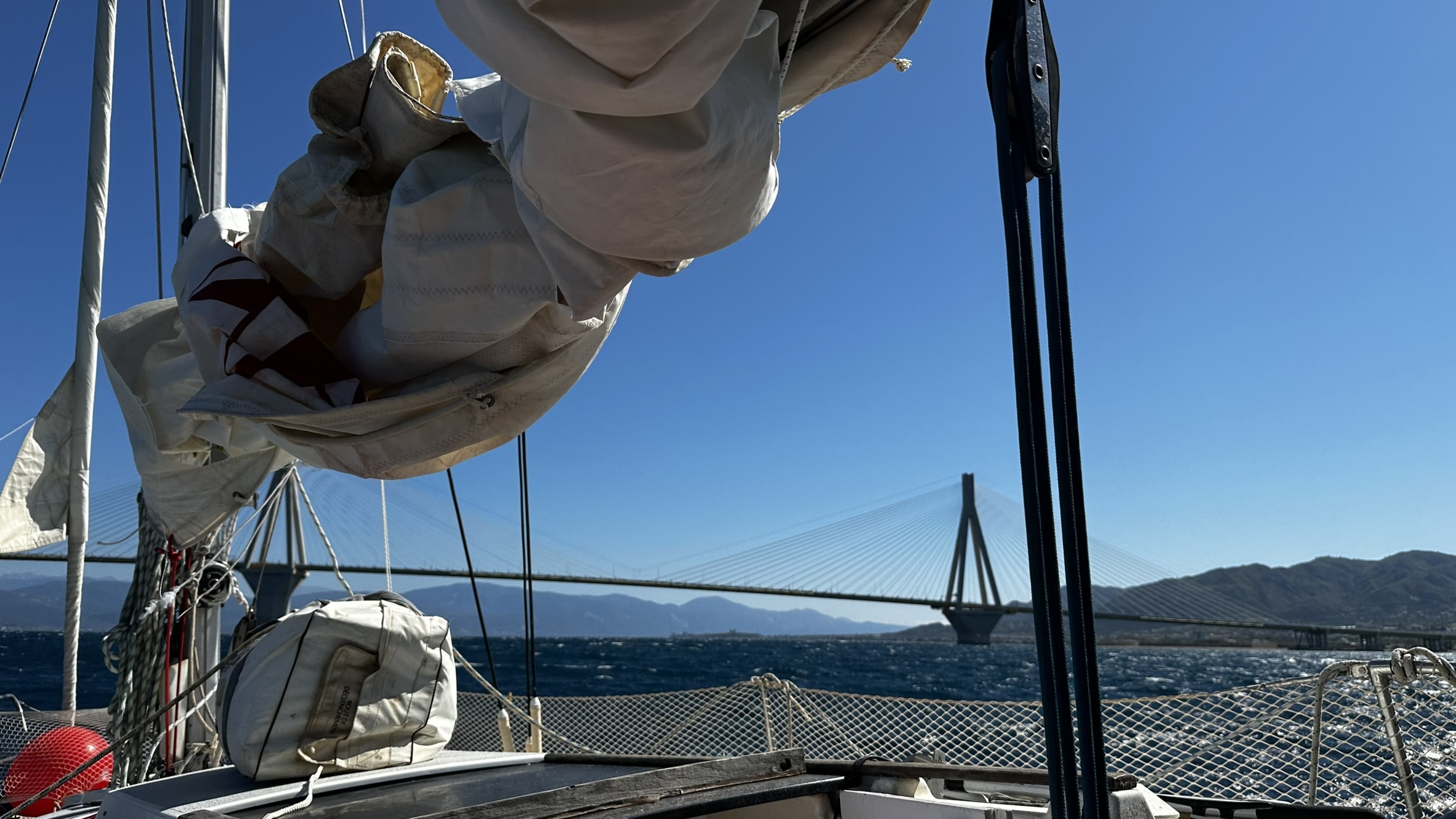
Since the incident in Patras, it actually took us 9 hours longer to sail to Trizonia due to the conditions. For comparison: This is a distance of 20 nautical miles, which under normal circumstances would take us 4-5 hours at most.


While we would never want to experience this again, we are incredibly grateful to have discovered Trizonia. The port was never completed and is therefore free to use.
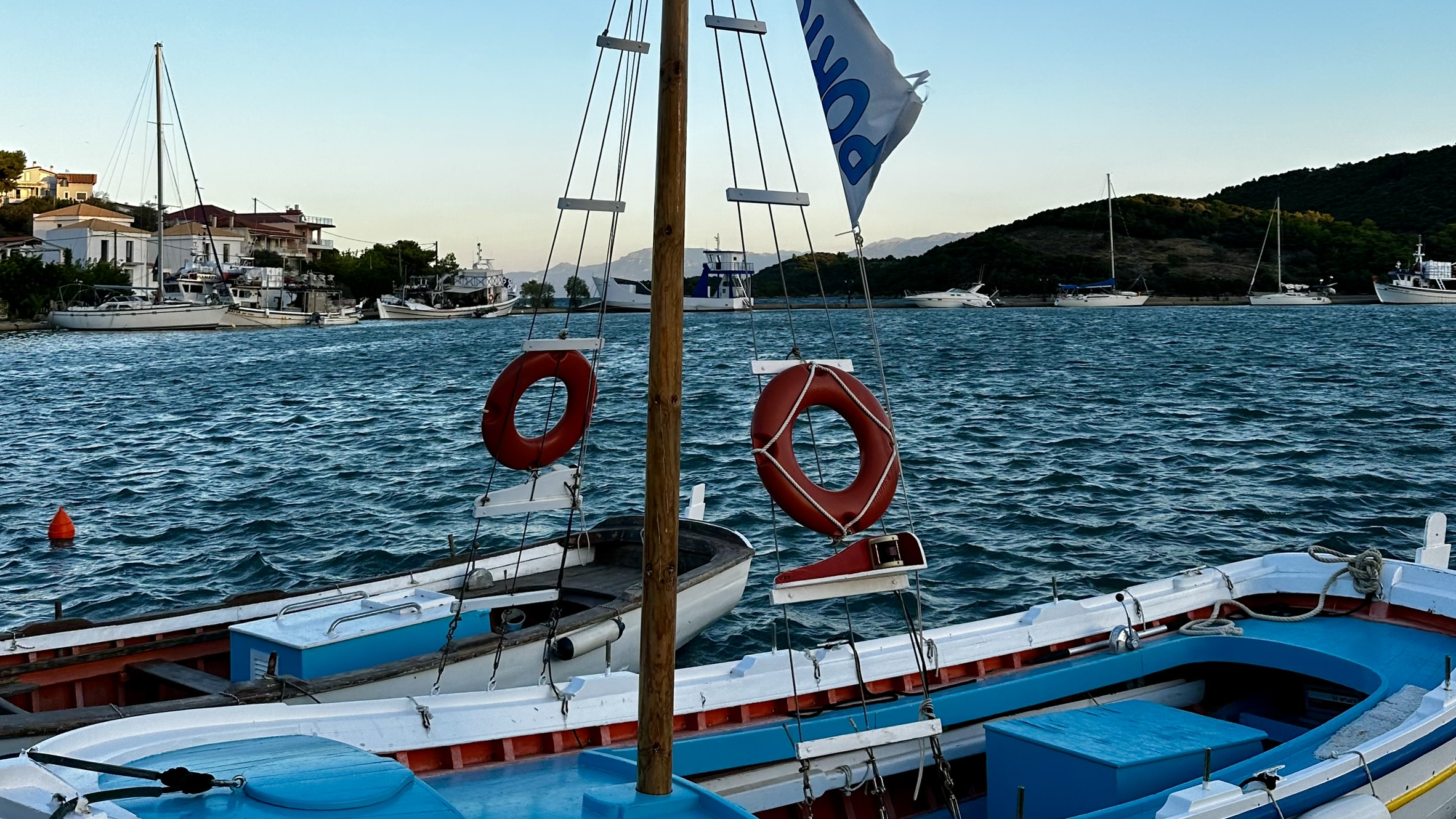
The island itself is small but beautiful. According to the locals, even one tavern remains open year-round, and there is no supermarket. In the worst case, we'll just stay here.
